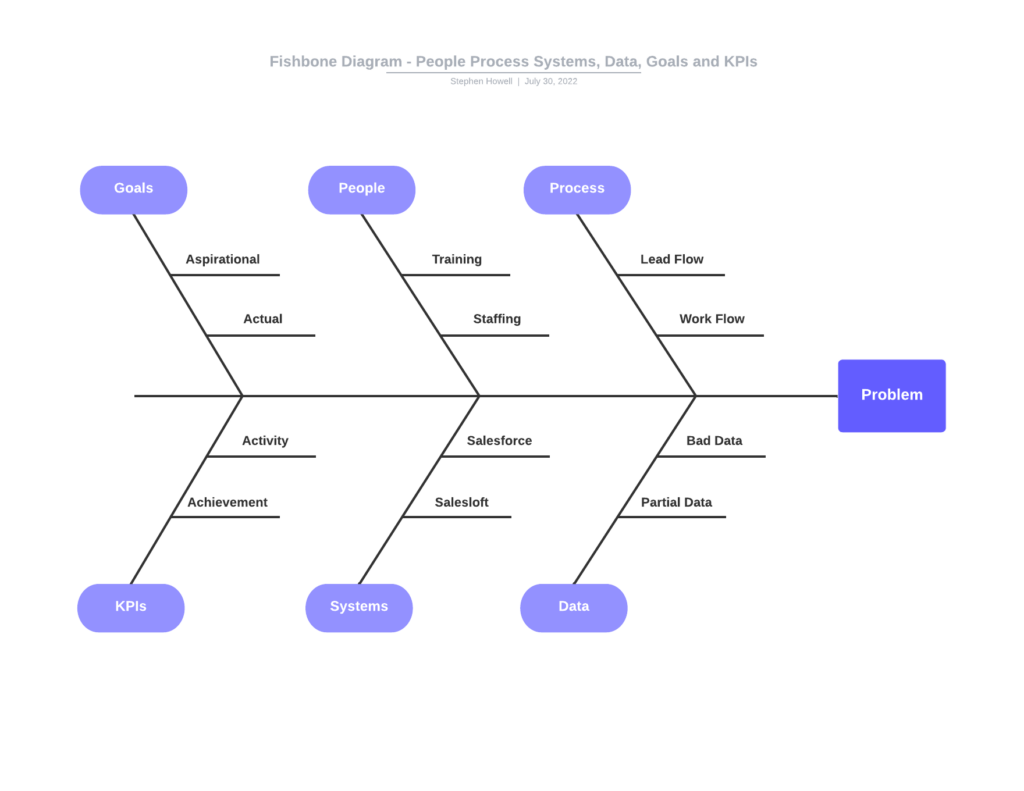Is your sales team’s response rate above or below expectations?
Why is their response rate above or below expectations?
What actions should you take?
Understanding the Problem
Long gone are the days of hustling prospects from the phone book. Long since has passed a time when you could jump your competition just by sending an email. Long past are those moments when a social media campaign using product placement with an influencer was even noticed.
Prospects do not answer calls from unknown callers. If you are not a contact in a prospect’s phone you will be ignored. Use local dialing and your call is even more likely flagged as spam. Yet if you leave the most compelling voice mail message ever crafted, it is likely to go unheard and be deleted.
Prospect do not reply to emails from unknown sales teams. If you have emailed a prospect and they opened your email, you have just that one chance to garner their attention before being banished to their junk mail folder for now and forever. Subsequent attempts will never reach them.
A single phone call or one email will not be sufficient to engage prospects. On the other hand, too many emails that lack relevant content will result in delegation to the spam bucket. Likewise, too many calls that interrupt will result in having your number blocked.
Steve Woodruff in his book Clarity Wins: Get Heard. Get Referred. said “Noise is the primary hurdle we must overcome. We are always one click away from being ignored.” Your sales team’s calls, emails and social messages can easily be ignored. The balance of power has shifted from your team to their prospects. Prospects now reach out to your sales team only when they are ready to purchase. We are broadcasting, but are we listening? Have we met the prospect in the channel of their choice in a timeframe of their choosing? That could mean phone, email, chat, virtual, or interstellar messaging.
“Hailing frequencies open …” (Lt. Uhura – Star Trek 1966 – S01E10 The Corbomite Maneuver)
It is commonly thought that prospects are 70% into their buying journey before they even consider talking with your sales team. And we know that no matter what everyone likes to buy but no one likes to be sold. Motives for purchase decisions are a thousand times more powerful than any selling skills your sales team can bring to bear on a prospect.
According to sales research it can take an average of eight touches before a prospect agrees to a meeting, demo, or sales presentation. Prospects are overloaded with all kinds of sales messages. They receive phone calls, voicemails, text messages, emails, letters, drop-ins, and more.
Prospects have gone on the offensive. Sales teams are on the defense. When sales teams have a defensive posture, they are less likely to have success in the long term. Prospects are actively seeking better and better solutions; they have already price and feature shopped the competition. All the while the sales team is may only look to maintain the status quo and focus only on retention of existing customers rather than acquisition of net new accounts. It is no longer sufficient to simply maintain while attrition erodes your customer base.
Sales teams need to deliver the right message to the right prospect at the right time. But having the right product or service at the right price and offering it to prospects at the right time is only part of the story.
Getting to Why
Classic reasons why your sales team’s activities lead to no response from prospects include:
- The sales team is not reaching out to the right person
- The sales team is not following an adequate sales process
- The sales team is not reaching out as quickly as possible
- The sales team is not using a compelling message
- The sales team is not delivering valuable and relevant content
- The sales team is expecting email to do all the work
- The sales team is not making enough phone calls
- The sales team is relying on intuition or memory to know when to reach out
Understanding in what areas the sales team is challenged may determine the solutions you consider.
People, Process, Systems, Data, Goals and KPIs
As discussed in the previous article Your Sales Team’s Follow-up Is Non-existent and Ineffective this is my go-to framework for exploring many business situations including problems like follow-up by sales teams. The problems sales teams face can be characterized by one of four categories: a People problem, a Process problem, a Systems problem, or a Data problem. It is common that problems with sales teams will spill over into one or more categories.
In a refinement to my go-to framework I have added Goals and KPIs. Thus, people, process, systems, and data become people, process, systems, data, goals and KPIs. While thinking about this I realized that a two-by-two quadrant (also known as a “four blocker” or “magic quadrant”) is better suited to decision support where each axis represents a criterion, for example cost and effort which is then further divided into small to large effort and low to high cost. Once the root cause or causes are determined, then it because simpler to explore solutions using the two-by-two quadrant.

Cause and effect diagrams like the one illustrated above can be especially useful for understanding why sales activities lead to no response. The fishbone diagram procedure is easy to use and understand by both sales leaders and sales team members. If approach collaboratively its use builds consensus by focusing attention on the where, when, and why problems occur. It is especially helpful when it is difficult to understand the contributing factors and causes to sales team problems.
The process is outlined below:
Step 1: Realize the problem.
Step 2: Brainstorm the major categories of the problem (use People, Process, System, Data, Goals and KPIs) and add them to the chart.
Step 3: Brainstorm all the probable causes to the problem and add them to the chart.
Step 4: Ask “Why does this happen?” and add the reason(s) to the chart.
Step 5: Go deeper by continuing to ask, “Why?”.
Once completed, the fishbone diagram should include all the potential and actual causes to problem. As stated earlier if done collaboratively, all participants’ ideas as to why should be reflected in the final diagram.
In practice, root cause analysis is likely to expose gaps in team training, processes that are poorly defined or missing all together, systems that do not work as expected, and data that is missing or incomplete. When you have a statement of why certain things happen, then you can act. Following this approach, you may find that you have solved the problem directly by simply stating the problem without need for further investigation.
Using Data to Understand Why Sales Activity Leads to No Response
Tony Robbins puts it best: Success leaves clues. But so does failure. To understand why activity does not lead to response, select a group of leads that have not responded. What do these they have in common? How are they all the same? How many calls did they receive? What was the connect rate? Which messaging was used in emails and voicemails? At what pace was outreach conducted? Did all the prospects progress to the end of the sales cadence or were they removed from cadence before completion? There so many questions that can be asked. You will find a place to hang them on your fishbone diagram.
Finding the Right Solution
Sales teams standout against competitors by growing relationships with prospects. When sales teams demonstrate a passion from helping, they build trust with prospects. If the sales team does not first understand the prospects situation, how will they know if and how they can help them.
The best sales team members go through a simple but powerful process of getting to know their prospects. This lets prospects know that the salesperson cares about them, their situation, and their problems. This builds trust with the prospect. And it is no secret that the more a prospect trusts the salesperson, the more likely they will share their pain points and needs with them. Which in turn leads to lowering or removing altogether any sales barriers before the salesperson demonstrate that they can competently deliver the product or service that solves the prospect’s problem and removes their pain, that it is the best solution to do so, and that it will be worth what the prospect will pay for it.
Every company has a unique sequence of selling activities that will lead to closing business. These are the activities that define your sales process. And, what works for one sales team is not likely to work for another team even in the same space.
And the best sales leaders manage the activity of their sales teams. “You can’t manage what you cannot measure.” is often attributed to Peter Drucker. Think about it, you cannot manage business results any more than you can manage time. It is difficult to predict and forecast sales outcomes. Revenue is a result that cannot be managed. If you seek to control sales outcomes, you must focus on the activity that leads to successful results.
Sales outcomes cannot be managed. Sales activities can.
Simply put, sales managers must manage. They must manage the events that lead to successful sales. With careful monitoring of the right metrics, it should be easy to see what level of activity is needed in pursuit of achieving the goals you have set for your sales team. Sales leaders therefore need to drive those actions that leads to successful outcomes.
Sales leaders must use motivation to drive ideal sales behaviors like making calls, sending emails, connecting socially, and building trust by offering help before expecting a sale. What motivates one member of a sales team may have no effect on another team member.
Leading indicators are those measures of effort that produce the desired outcomes. For example, calls made is a leading indicator of opportunities created. You can count the minimum, average and number of calls made for that leads to the creating of each opportunity. For every opportunity created it might take your sales team eighty calls (i.e., 80:1). Improve this ratio and improve your results.
Lack of results manifests itself in skill or will. The sales team is making the eighty calls (example above) but not creating opportunities. That is a result of skill. The sales team is not making eighty calls and not creating any opportunities. That is a matter of will.
Back to the problem. If the sale team is conducting enough of the right activities, it comes down to skill and timing. The right activity at the right time. The right call at the right time of the day to the right person.
Utter the right words and phrases at the right time to the right people often enough and the sales team will schedule the required number of virtual demos, set the required number of face-to-face appointments, and close the required number of deals to not just make but exceed revenue goals.
In Conclusion
Prospects want to know that the decision to purchase your product or service is going to be safe, that they are not going to lose their job if they choose your solution over your competitors, and that they are not overpaying for your product or service.
Robert Baden-Powell, the English founder of the Boy Scouts, said “Be Prepared”. When your sales team connects with a prospect, they will have only once chance to get it right. Make it count.
About the Author
Stephen Howell is a multifaceted expert with a wealth of experience in technology, business management, and development. He is the innovative mind behind the cutting-edge AI powered Kognetiks Chatbot for WordPress plugin. Utilizing the robust capabilities of OpenAI's API, this conversational chatbot can dramatically enhance your website's user engagement. Visit Kognetiks Chatbot for WordPress to explore how to elevate your visitors' experience, and stay connected with his latest advancements and offerings in the WordPress community.





